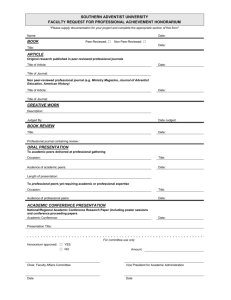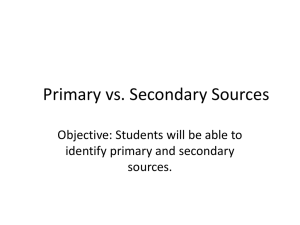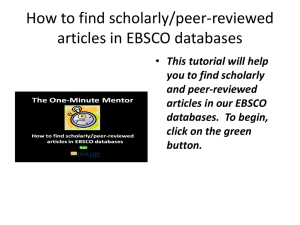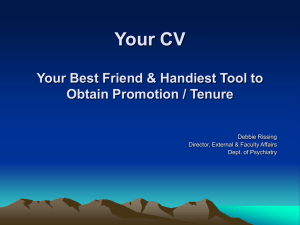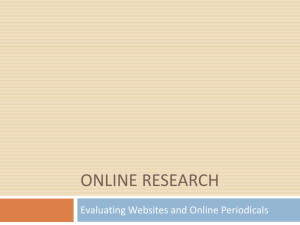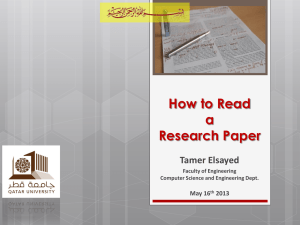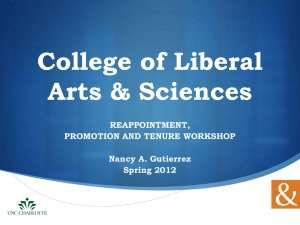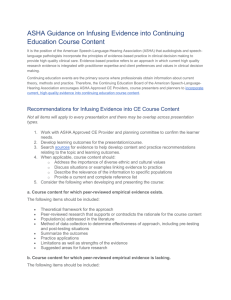What does NOT classify as a peer
advertisement
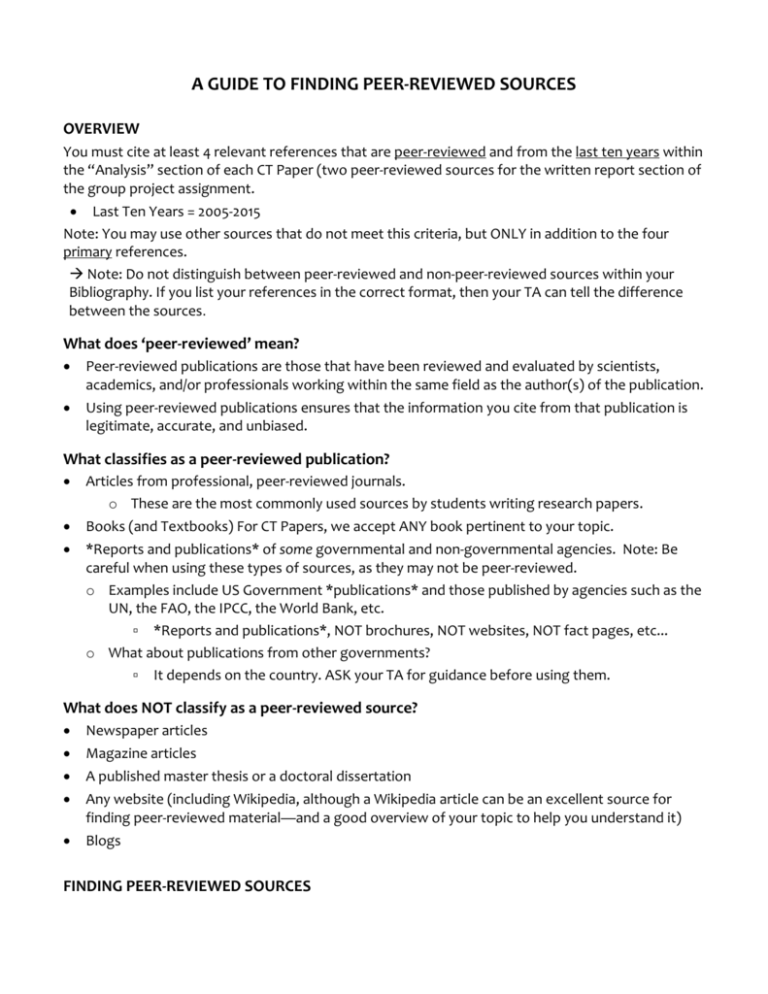
A GUIDE TO FINDING PEER-REVIEWED SOURCES OVERVIEW You must cite at least 4 relevant references that are peer-reviewed and from the last ten years within the “Analysis” section of each CT Paper (two peer-reviewed sources for the written report section of the group project assignment. Last Ten Years = 2005-2015 Note: You may use other sources that do not meet this criteria, but ONLY in addition to the four primary references. Note: Do not distinguish between peer-reviewed and non-peer-reviewed sources within your Bibliography. If you list your references in the correct format, then your TA can tell the difference between the sources. What does ‘peer-reviewed’ mean? Peer-reviewed publications are those that have been reviewed and evaluated by scientists, academics, and/or professionals working within the same field as the author(s) of the publication. Using peer-reviewed publications ensures that the information you cite from that publication is legitimate, accurate, and unbiased. What classifies as a peer-reviewed publication? Articles from professional, peer-reviewed journals. o These are the most commonly used sources by students writing research papers. Books (and Textbooks) For CT Papers, we accept ANY book pertinent to your topic. *Reports and publications* of some governmental and non-governmental agencies. Note: Be careful when using these types of sources, as they may not be peer-reviewed. o Examples include US Government *publications* and those published by agencies such as the UN, the FAO, the IPCC, the World Bank, etc. ▫ *Reports and publications*, NOT brochures, NOT websites, NOT fact pages, etc... o What about publications from other governments? ▫ It depends on the country. ASK your TA for guidance before using them. What does NOT classify as a peer-reviewed source? Newspaper articles Magazine articles A published master thesis or a doctoral dissertation Any website (including Wikipedia, although a Wikipedia article can be an excellent source for finding peer-reviewed material—and a good overview of your topic to help you understand it) Blogs FINDING PEER-REVIEWED SOURCES As a university student, you have access to a wealth of free peer-reviewed information. Take advantage of this while you’re here!!! You may find books and e-books through the OSU Library website, but it is also a useful tool for finding peer-reviewed journal articles. How to Find Peer-Reviewed Journal Articles through the OSU Library Website Go to oregonstate.edu Click on the “Library” link at the top of the page Type some key words related to the topic you’re researching o It helps to play around with this, as you will get different results if you change some of these words. For example, you can type “sustainability of electric cars”, then try something like “benefits of electric vehicles”, or “disadvantages of electric cars”, etc. IMPORTANT: Once you are on the page showing the results of your search, make sure you click on “Peer-reviewed Journals”, located to the left, under “Show only” (as shown by the red arrow below) o This will ensure that you only look through sources that classify as ‘peer-reviewed’ Alternative Search Engines You can use other search engines and databases if you wish. Google Scholar is a popularly used tool for finding peer-reviewed journal articles, but you must be careful when using it, as this database is not as clear about the quality of the results from your search (as the OSU Library website can be). To check to be sure that a Google Scholar article is peer reviewed, plug it into the OSU search engine with “peer-reviewed Journals button checked. OR, ask your TA for guidance. If you’re not certain whether a source you want to use is peer-reviewed or not, contact your instructor or the T.A. and have them approve (or disapprove) of the source.
